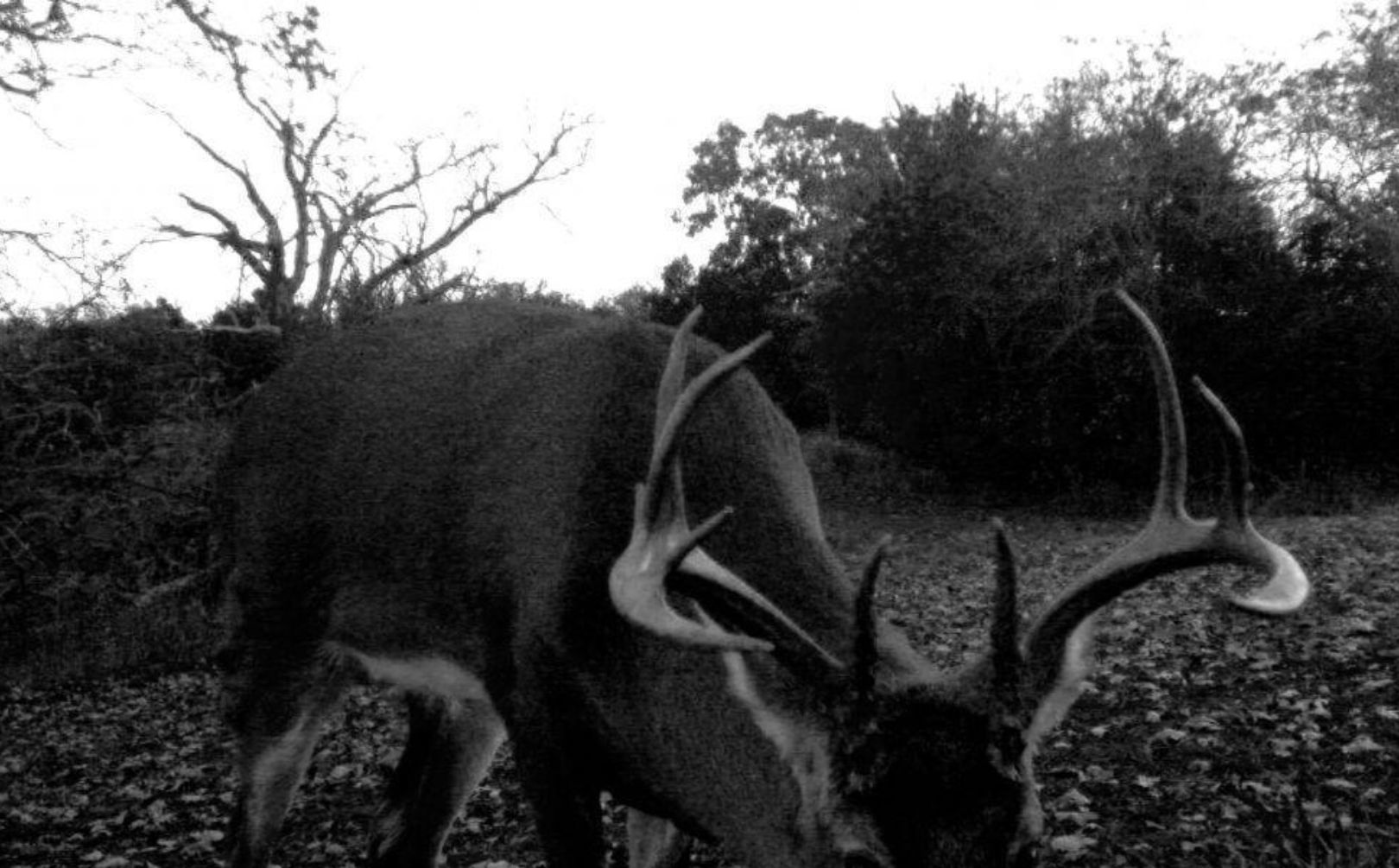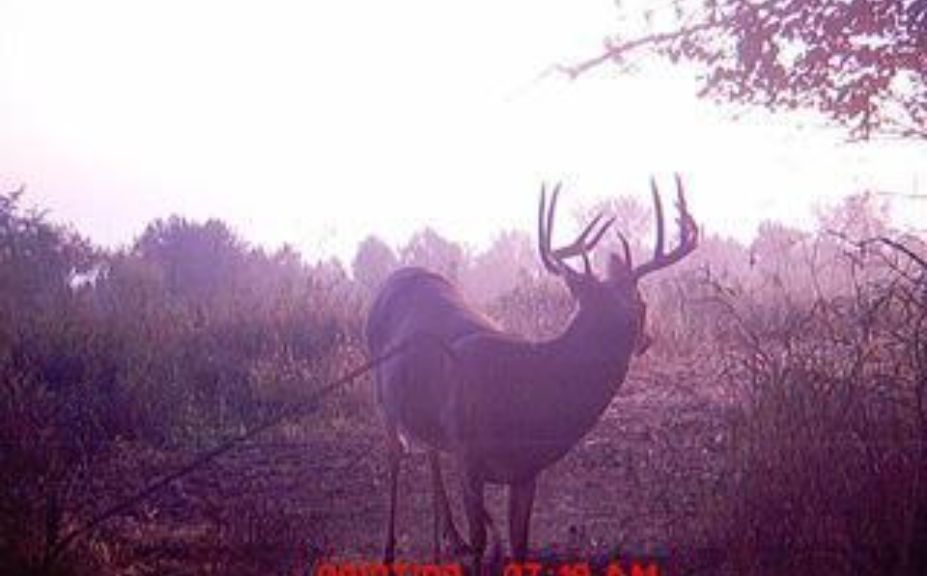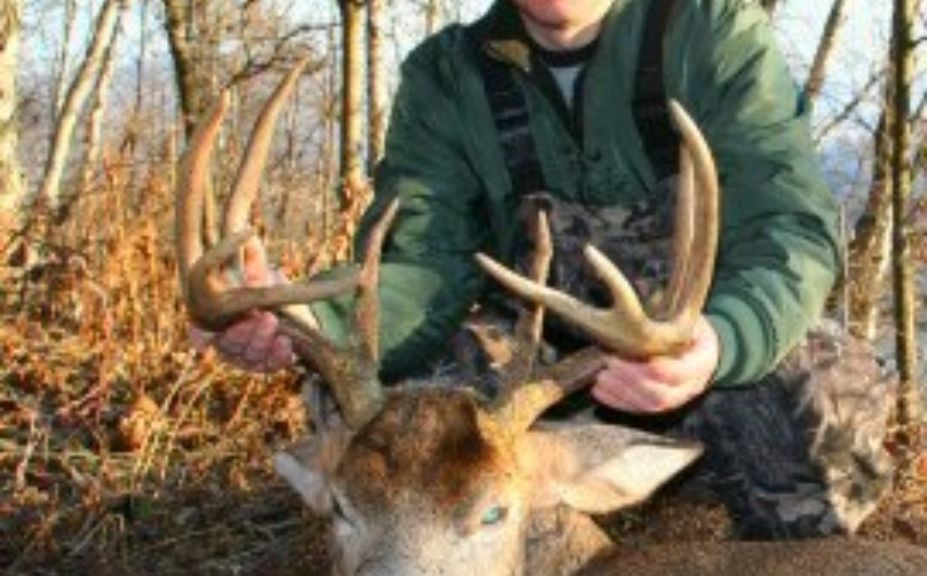
Have you ever hunted a Ghost Buck? A Ghost Buck is an elusive, anti social giant who doesn't live and move like the rest of the buck herd. It takes a special set of ghost buck hunting tactics to connect on one of these incredible beasts; are you ready?
*Make sure to check out my whitetail book series including, "Whitetail Success By Design" and "Food Plot Success By Design", to help you find mature bucks this hunting season!
Characteristics of a Ghost Buck
During the Summer of 2009, we discovered the pictures that reflected the movements of a super-shy ghost buck. He never appeared in photos with other deer, and his movements were random, mysterious and unpredictable. We captured pictures of the mythical beast during the daylight, morning, afternoon, evening as well as during the middle of the night. And then he disappeared completely, vanishing to lands unknown. It wasn't until over a year later that at least a portion of his wildly undefined movements were revealed while we were practicing one of the ghost buck hunting tactics. Here are a few ghost buck personality traits:
1. Shy
2. Loner
3. Dominated and Suppressed.
4. Non-Confrontational (most calling techniques will repel)
5. Predictably Unpredictable
6. Mysterious Drifter
7. Mythical and Legendary
8. Survivor
9. World Class Hider
10. Wary, Mature and Extremely Reactive To Hunting Pressure

*Is a Ghost Buck truly a mystery? Although I have experienced that various bucks are much more shy than others, there is at least one solid explanation: They just don't live on the land you hunt. To help explain what a "Non Core" buck is, try reading "Core Mature Buck Hunting Strategies".
Ghost Buck Hunting Tactics
Is the ghost buck that you are after living on your land or not? That's not the point. The point is, that you can not make one mistake without turning this elusive monarch into an ultra shy legend. It pays to delicately chip away at various highly defined, non-invasive opportunities, including:
1. An evening, bedding area exit stand that is 100 yards or more away from food, and at the same time far enough away from a mature buck's daytime bedding area that you can get in and out with spooking him.
2. Think "thick cover and limited shots". If the habitat is old and open, you most likely will not see him during shooting hours.
3. In dry habitat, remote and hidden interior waterholes can be the perfect spot to ambush a ghost buck. I do not believe that a waterhole is seen at the same level of risk as a food plot, and at the same time, the smaller the waterhole the lower the risk.
4. The first time into a stand is the best time for a successful hunt with any mature buck, let alone a ghost. However, that doesn't translate into a " one and done" mentality where you abandon proper access, scent control and stand preservation techniques. On the contrary, if you feel that you only have one good sit in a particular stand because of the amount of hunting pressure that you have to leave to access, sit and hunt; then don't hunt, it isn't worth it. And that is especially true for a buck that survives and breathes by drifting through the world's of myth, legend and reality.
5. Does it squeak, rattle, snap, ting, ring or rip (like Velcro)? Then I would avoid using it! Even if it is your favorite tree stand, back pack, bow release or hunting boots.
6. At first thought, the middle of the Rut may seem like the perfect time to predictably harvest this unpredictable legend; but it probably isn't. There is a reason super shy monsters develop, and it is often because they are being suppressed by another local giant. They learn to run and hide instead of stay and fight, and that tactic often allows them to age well with the aid of additional level of safety and security. The last place I would think a super shy freak would want to show his face, is during the middle of the peak rut. Instead, focus on the more lazy and inconspicuous periods of the early bow season, October Lull cold fronts, the pre rut, and late season evening feeding patterns.
7. Bow and Gun season " honey hole" bedding area thickets can be an incredible spot to connect on a morning ghost buck! If the cover is unpressured, away from other deer, remote and hard to reach, it may be highly likely for you to stumble into a legend after an early entrance into a downwind stand location.

*When did our 2009 ghost buck reveal a portion of his patterns? When 3 days of heavy hunting pressure and deer drives by a neighboring parcel finally pushed him from his daytime sanctuary, and into the path of my hunting buddy Max. Max was well positioned on the 4th morning of the 2010 WI rifle season, between very secure bedding areas. Max caught the buck sneaking through with a doe at 7:30 in the morning and shot the doe too, both at less than 30 yards. For more tips in how to hunt a bedding area, check out "How To Hunt A Deer Bedding Area".
Conclusion
Will you be practicing any ghost buck hunting tactics this season? Then I urge you to be very, very careful! In my experience you only get one shot and you need to be ready, because a Ghost buck can rise out the fog of myth and legend, even after he completely vanishes for a year or longer.